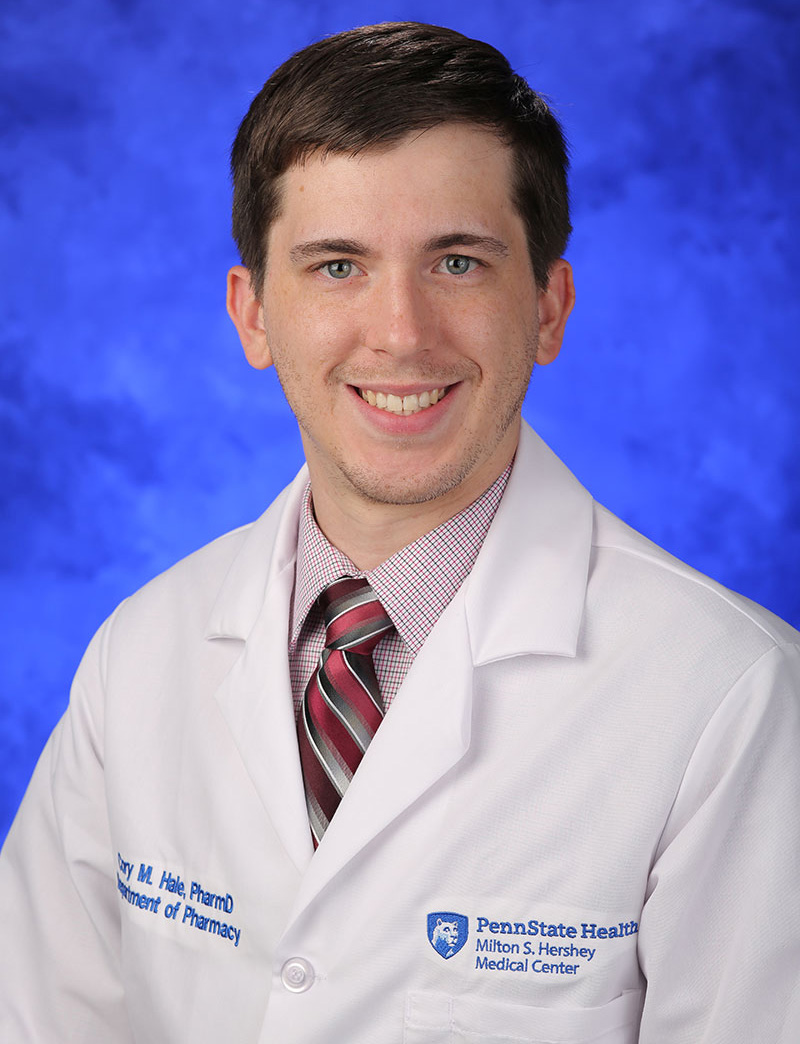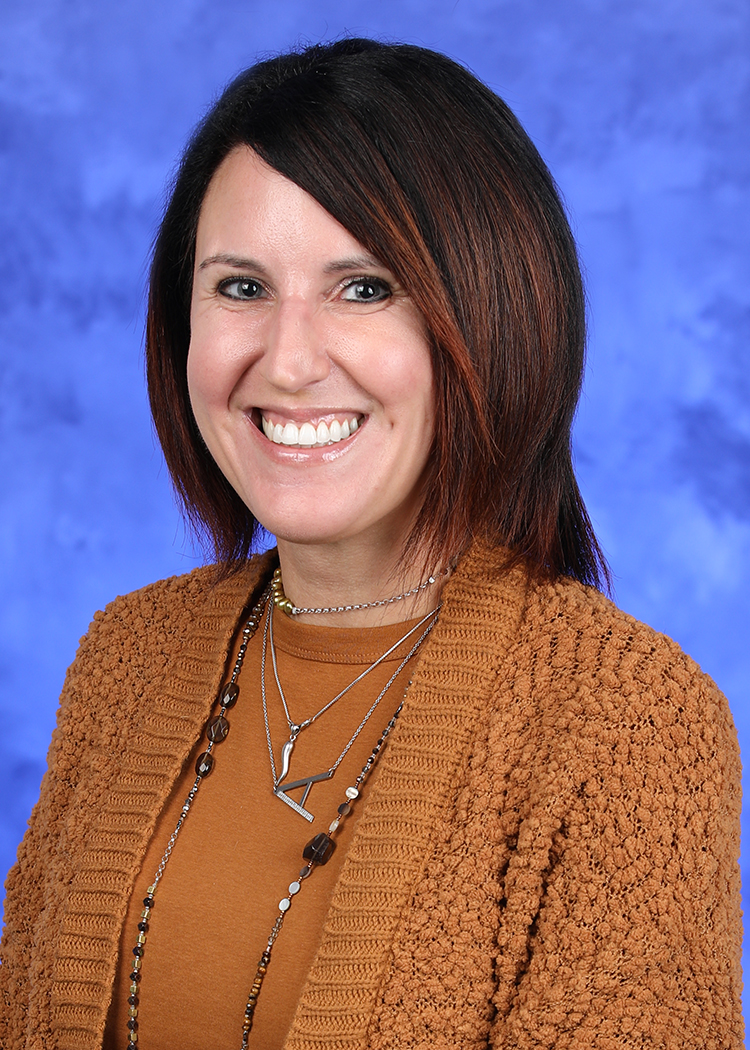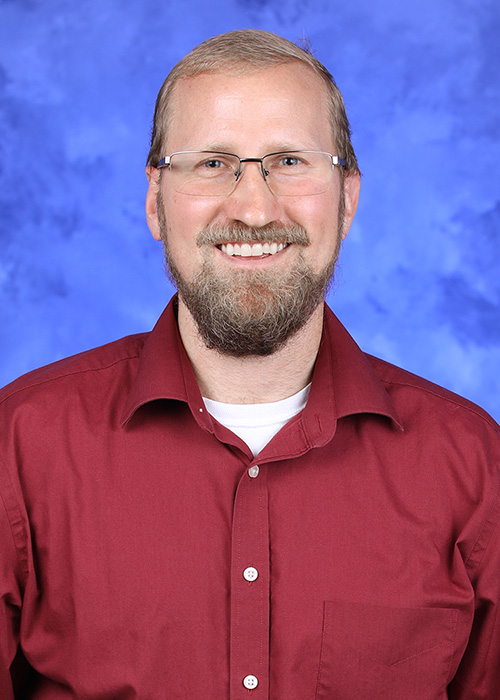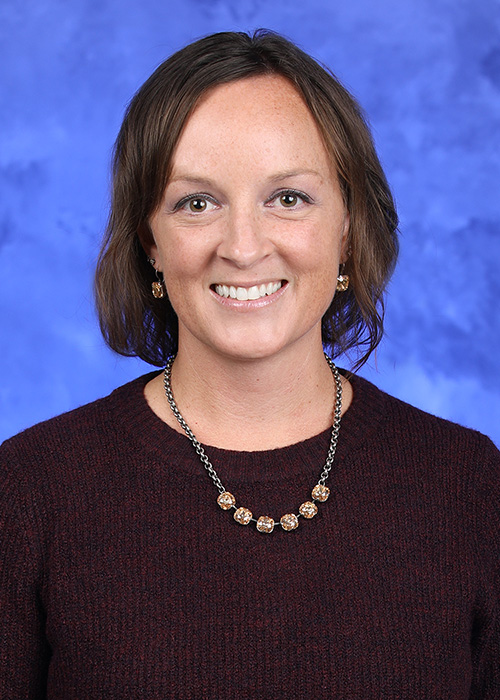Jump to topic
Search
Program Details
In 1985, Penn State Health established a one-year Pharmacy Residency — a challenging program. With an emphasis on evidence-based pharmacotherapy recommendations, it extends a pharmacist’s training to all aspects of health-system pharmacy practice. It has also been designed to offer flexibility to meet the needs of the individual resident. We encourage you to develop areas of interest and expertise in pharmacy practice.
In 2017, the program expanded to include a PGY-2 critical care residency, which hosts two residents per year; and in 2023 PGY-2 programs for Pediatrics and Oncology were added (one resident each).
Today, the Pharmacy Department is proud of each program’s success and of the accomplishments of its residents. The entire department participates in training, enabling the program to achieve a high level of recognition for excellence.
Pharmacy residents in both the postgraduate year one (PGY-1) program and postgraduate year two (PGY-2) program are immersed in patient care pharmacotherapy opportunities consisting of several different practice areas.
- Penn State Health Milton S. Hershey Medical Center is a large, tertiary care acute adult teaching hospital.
- Penn State Health Children’s Hospital features the region’s highest level neonatal and pediatric intensive care units including a Level I trauma center. Penn State Health Children’s Heart Group offers comprehensive congenital heart care including surgery as well as support with ECMO.
- Penn State Cancer Institute promotes multidisciplinary approaches to cancer care.
- Each year, the emergency department provides services for more than 70,000 visits. Nearly 30,000 patients are admitted to the hospital, and 1 million outpatient clinic visits occur.
Pharmacy residents are supported in an educationally stimulating academic medical center environment in which 1,700 multidisciplinary trainees are dedicated to extensive learning. The pharmacy department focuses on the comprehensive medication-related needs of its patients, with 200 dedicated team members. Pharmacists precept approximately 100 pharmacy students each year.
In addition to a state-of-the-art automated drug distribution and medication management program, pharmacy preceptors practice as essential members of interdisciplinary patient care teams and clinics. Pharmacists are present in unit-based patient care settings for a variety of areas including medicine, cardiology, surgery and pediatrics, constantly interacting with physicians and other health care providers.
The pharmacy offers decentralized pediatric and adult satellites, outpatient clinics, outpatient pharmacies, an emergency department with 24/7 pharmacist presence, investigational drug services and more. Along with medication order verification, disease state medication dosing, clinical monitoring and pharmacy consults, pharmacy team members focus on bedside patient interactions such as medication reconciliation, medication-focused teaching and discharge counseling. These pharmacy services are supported by more than two dozen clinical specialists and clinical pharmacists practicing side-by-side with physicians and nurses.
Learn More about the Residency
General Application Information
Interested applicants must register with the American Society of Health-System Pharmacists (ASHP) Residency Matching Program and apply through the Pharmacy Online Residency Centralized Application Service (PhORCAS).
To be considered for the Pharmacy Residency, a PhORCAS application and online application must be complete by early January. Exact deadline each year can be found on the ASHP Residency Directory.
Applicants must submit all of the following through PhORCAS:
- PGY-1 candidates:
- A letter of interest, including a statement on diversity, equity and inclusion
- Copy of curriculum vitae
- Official copy of college transcript
- Three (3) letters of recommendation
- PGY-2 candidates:
- Letter of intent addressing the following:
- Interests and reasons for pursuing advanced training
- Strengths and areas for improvement
- Career goals for the next 5 years
- Copy of curriculum vitae
- Official, finalized copy of college transcript (including degree(s) conferred)
- Three (3) letters of recommendation
- PGY-2 Pediatrics: Please ensure application requirements align with requirements for this year.
- Letter of intent addressing the following:
An online application will be required from candidates offered a formal interview. One may be accessed via Penn State Health Careers by searching the job category of “Pharmacy Resident” and the location “Hershey.”
Selection Process
Each program will consider all complete applications received by the deadline, with additional potential benefit of an early offer to interview if all materials are received prior to the deadline for qualified candidates. Candidates chosen for interviews will be contacted as soon as possible to arrange an interview date and time.
Interviews
Interviews are by invitation only, typically conducted mid-January through February. Those invited for an interview will be notified by email and are asked to respond promptly.
The PGY-1 program prefers to interview up to four candidates at a time, yet formal interview times are individualized to create a more personalized experience. Only a small part of the day is done in a joint interview format, during the program overview, presentation and lunch with current residents.
Interview days generally begin between 8 and 9 a.m. and conclude by 3 p.m. The day includes program director and multiple preceptor interviews, lunch and a tour with current residents (for in-person interviews – virtual interviews will include a break for lunch and a separate time to meet with the PGY-1 residents), and a pharmacotherapy competency assessment. Those invited to interview will be asked to prepare a short “About Me” slide presentation for preceptors to get to know each candidate better.
Please contact the PGY-1 or PGY-2 Program Director with any question regarding the interview process:
- PGY-1 Pharmacy Residency: Cory Hale, chale@pennstatehealth.psu.edu
- PGY-2 Critical Care: Ashley Quintili, aquintili@pennstatehealth.psu.edu
- PGY-2 Oncology: Jeffrey Sivik, jsivik@pennstatehealth.psu.edu
- PGY-2 Pediatrics: Lindsay Trout, ltrout1@pennstatehealth.psu.edu
- Pharmacy Administrative Office Phone Number: 717-531-5885
Virtual Tour
Penn State Health
Penn State Health is an integrated academic health system serving patients and communities across 15 counties in central Pennsylvania. It employs more than 20,900 people systemwide.
The system includes Penn State Health Milton S. Hershey Medical Center, Penn State Health Children’s Hospital and Penn State Cancer Institute based in Hershey, Pa.; Penn State Health Hampden Medical Center in Enola, Pa.; Penn State Health Holy Spirit Medical Center in Camp Hill, Pa.; Penn State Health Lancaster Medical Center in Lancaster, Pa.; Penn State Health St. Joseph Medical Center in Reading, Pa.; Pennsylvania Psychiatric Institute, a specialty provider of inpatient and outpatient behavioral health services, in Harrisburg, Pa.; and 2,417 physicians and direct care providers at 225 outpatient practices. Additionally, the system jointly operates various healthcare providers, including Penn State Health Rehabilitation Hospital, Hershey Outpatient Surgery Center and Hershey Endoscopy Center.
In 2017, Penn State Health partnered with Highmark Health to facilitate creation of a value-based, community care network in the region.
Penn State Health shares an integrated strategic plan and operations with Penn State College of Medicine, the University’s medical school. With campuses in State College and Hershey, Pa., the College of Medicine boasts a portfolio of more than $150 million in funded research and more than 1,700 students and trainees in medicine, nursing, other health professions and biomedical research.
Learn more about Penn State Health
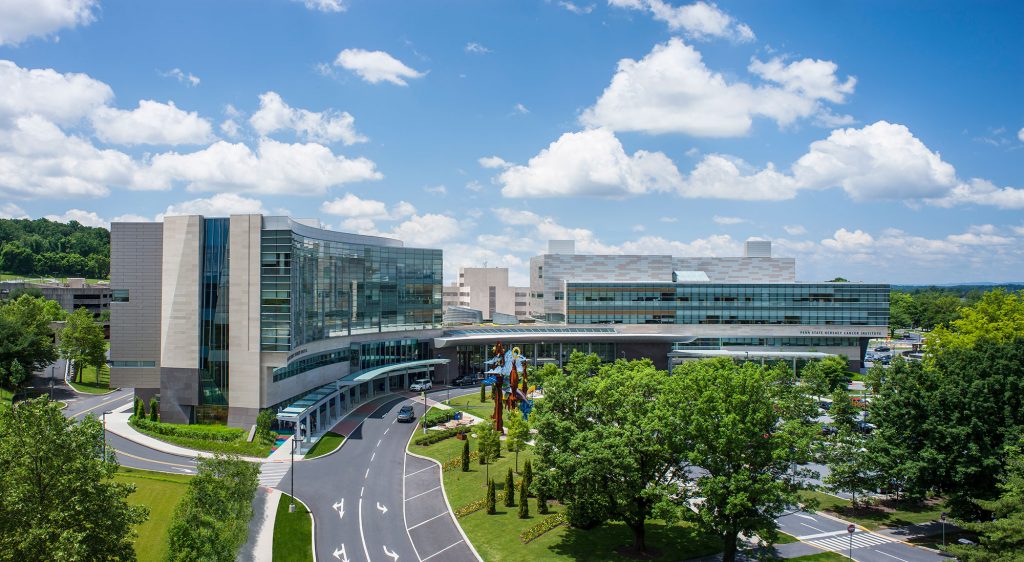
Penn State Health Children’s Hospital (left), Penn State Health Milton S. Hershey Medical Center (center) and Penn State Cancer Institute (right)
Penn State Health Milton S. Hershey Medical Center
500 University Dr., Hershey, Pa., 17033 (Derry Township, Dauphin County)
- The health system’s 611-bed flagship teaching and research hospital
- The only medical facility in Pennsylvania accredited as both an adult and a pediatric Level I (highest-level) trauma center
- Dedicated surgical, neuroscience, cardiovascular, trauma and medical intensive care units
- Accredited Life Lion critical-care transport providing more than 1,100 helicopter and approximately 750 ground ambulance transports per year
- More than 1,300 faculty members and more than 650 residents and fellows
- Approximately 29,000 admissions, 73,000 emergency department visits, 1.1 million outpatient visits and 33,000 surgical procedures annually
- Designated as a Magnet hospital since 2007
Learn more about Milton S. Hershey Medical Center
Penn State Health Children’s Hospital
600 University Dr., Hershey, Pa. 17033 (Derry Township, Dauphin County)
- An eight-story, 263,000-square-foot-facility built in 2013 and expanded in 2020
- 160 licensed pediatric beds, 26-bed pediatric intensive care unit and a 56-bed neonatal intensive care unit
- Level IV (highest-level) neonatal intensive care unit
- Level I quaternary (highest-level) pediatric intensive care unit
- Level I (highest-level) pediatric trauma center designation
- Intermediate care unit
- Dedicated pediatric operating rooms
- More than 150,000 pediatric outpatient visits, 20,000 pediatric emergency room visits, and approximately 5,000 pediatric patient discharges annually
Welcome to Hershey
More About Hershey
Interested in learning more about living and working in Hershey, Pa.? See details here:
Institutional Resources
Penn State Health and Penn State College of Medicine celebrate, embrace and support the diversity of all patients, faculty, staff, students and trainees.
Office for Diversity, Equity and Inclusion
In keeping with this, Penn State Health has an active Office for Diversity, Equity and Inclusion with various programs, networks and resource groups, including:
- Talks and lectures on diversity, equity and inclusion through the Inclusion Academy
- Regular events on topics such as eradicating racism and creating a culture of inclusiveness
- Many Business Employee Resource Groups (BERGs), including:
- Disability Business Employee Resource Group
- Interfaith Business Employee Resource Group
- LGBTQ+ Business Employee Resource Group
- Military and Veterans Business Employee Resource Group
- Multicultural Business Employee Resource Group
- NextGen Business Employee Resource Group
- Black Physician Professional Staff Association – Resource Group
- Hispanic Professional Association
- Asian Physician and Professional Staff Association
- International Workforce Inclusion
- Inclusion Academy
Learn more about the Penn State Health Office for Diversity, Equity and Inclusion
Learn more about the College of Medicine’s Office for Diversity, Equity and Belonging
Office for Culturally Responsive Health Care Education
The vision at Penn State College of Medicine and Penn State Health is to equip learners with the knowledge, skills and attitudes they will need to provide culturally excellent health care and research for an increasingly diverse U.S. population. The Office for Culturally Responsive Health Care Education was formed to help meet that goal.
Learn more about the Office for Culturally Responsive Health Care Education
Office for a Respectful Learning Environment
In addition, the institution does not tolerate discrimination, biases, microaggression, harassment or learner mistreatment of any kind, and any concerns are immediately addressed by the Office for a Respectful Learning Environment.
Learn more about the Office for a Respectful Learning Environment
Network of Under-represented Residents and Fellows
The Network of Under-represented Residents and Fellows (NURF) is a group of diverse residents and fellows representing all specialties. NURF’s goal is to promote cultural diversity in the residency programs through community involvement, mentorship with diverse faculty, professional networking and support for the recruitment of diverse medical students into the residency programs.
NURF is sponsored by the Penn State College of Medicine Graduate Medical Education Office and the Penn State Health Office for Diversity, Equity and Inclusion.
PGY-1 Curriculum
The activities in the Pharmacy Residency include the following:
- Patient care team-based rounding
- Patient case presentations and topic discussions
- 24/7 clinical on-call, including ACLS response
- Providers formally consult pharmacy for pharmacokinetic dosing and a wide variety of drug information inquiries. After orientation, each resident serves as “first call” for approximately one day each week in-house, 7 a.m. to 9 p.m. (on-call is from home during off-hours overnight) with a clinical preceptor assigned as second call available at all times. We require formal documentation in the electronic medical record for each consult patient.
- Hospital pharmacy staffing
- Residents are required to staff every third weekend in eight-hour shifts Saturday and Sunday (on-call one of these days), and one evening every three weeks. Four additional 8-hour shifts must be picked up over the course of the residency year. This requirement is typically in the central pharmacy or in the IV room with several technicians and additional pharmacist support present.
- Longitudinal clinics
- Residents spend an assigned afternoon each week for two-thirds of the year in the anticoagulation clinic, located less than a mile from the medical center. The majority of time is spent in point-of-care direct patient clinic appointments. A specific afternoon of the week is assigned for each one-third of the year.
- Residents spend an assigned afternoon or morning each week for one-third of the year in an elective clinic, which may be the solid organ transplant ambulatory clinic located at Hershey Medical Center, the primary care clinic located on Cocoa Avenue, the rheumatology clinic in Middletown or the oncology clinic performing specialty pharmacy services at Hershey Medical Center. Additional clinics such as HIV clinic may become available depending on preceptor availability and resident interest.
- Major research project
- With research project preceptor mentorship, residents complete an original institutional review board (IRB) protocol submission by the end of summer, create an electronic data collection tool and analyze data. Research is presented at the annual Eastern States Residency Conference. The regional conference is typically held each spring in Hershey, and includes residency programs from more than 10 states.
- Medication use evaluation
- Residents will conduct a selected drug use evaluation during the first six months of the program. Results will be presented in poster format at a national residency session immediately prior to the ASHP Midyear Clinical Meeting.
- Pharmacy and Therapeutics Committee
- Residents will serve as secretary assistant to the Pharmacy and Therapeutics Committee for one to two months during the program year. Each resident also will complete at least one drug monograph for a medication being considered for formulary addition.
- Teaching Opportunities
- Residents prepare and provide a lecture on a pharmacotherapy topic early in the year to students of the Penn State College of Medicine Physician Assistant Program.
- Residents prepare and deliver an Accredited Continuing Pharmacy Education (ACPE) lecture to the pharmacy department, typically in January, February or March of the program year.
- Student preceptorship
- Journal club facilitation
- Teaching certificate (optional) through Shenandoah University
- Additional teaching opportunities also exist as optional activities
- Student preceptorship
- Journal club facilitation
- Transition of care
Each of the following learning experiences have a minimum of one rotation each:
- Adult critical care (medical/pulmonary ICU, surgical/anesthesia ICU or heart and vascular ICU)
- Adult internal medicine (internal medicine or family and community medicine service)
- Advanced medicine (adult or pediatric population)
- General pediatrics (if the resident is a previous pediatric APPE, the possibility exists to substitute NICU, PICU or pediatric hematology/oncology)
- Infectious diseases
- Practice management
Each of the following required experiences or training areas continues throughout the program.
- Ambulatory primary care, solid organ transplant clinic, rheumatology clinic or oncology specialty pharmacy (one-third of year)
- Anticoagulation clinic (two-thirds of the year)
- Drug use policy
- Hospital pharmacy practice
A number of electives are available in the Pharmacy Residency, including:
- Adult bone marrow transplant
- Adult hematology
- Adult oncology
- Advanced internal medicine
- Ambulatory care clinic
- Antimicrobial stewardship
- Cardiology
- Emergency medicine
- Family and community medicine inpatient
- General pediatrics
- Heart and vascular intensive care
- HIV ambulatory
- Immunocompromised infectious diseases
- Medical intensive care
- Medication safety
- Neonatal intensive care
- Neuroscience intensive care
- Pediatric hematology/oncology
- Pediatric intensive care
- Solid organ transplant – ambulatory
- Solid organ transplant – inpatient
- Specialty pharmacy
- Surgical trauma intensive care
PGY-2 Curriculum
- Required rotations:
- Anesthesia ICU
- Heart and Vascular ICU
- Medical ICU
- Surgical/Trauma ICU
- Pediatric ICU
- Emergency Medicine
- Elective rotations:
- Neuroscience ICU
- Neonatal ICU
- Advanced Infectious Diseases
- Advanced Hematology/Oncology
- Adult Bone Marrow Transplant
- Major research project residents are involved in include cost savings initiatives, ACPE-accredited CE lectures, ICU quality improvement committees, and additional teaching opportunities.
- Residents are highly involved in precepting students and PGY-1 residents.
- Required rotations:
- Adult Hematology
- Adult Stem Cell Transplant/Cellular
- Inpatient Oncology/Transitions of Care
- Oncology/Infusion
- Oncology Pharmacy Practice Management
- Pediatric Hematology/Oncology
- Specialty Oncology
- Elective rotations:
- Adult Oncology
- Immunocompromised Infectious Diseases
- Pediatric Hematology/Oncology
- Pain/Palliative Care
- Medication Safety
- Oncology Pharmacy Informatics
- Oncology Critical Care (ED/MICU)
- Specialty Oncology
- Longitudinal Specialty Oncology Clinic (Hematology or Oncology focused)
- Project management, presentation skills, and precepting in our layered learning model are emphasized throughout the program.
- Major research project of publishable quality include presentations, continuing education, and high-quality medication use evaluations.
- Teaching certificate available.
- Other longitudinal activities include: Oncology/Rx To Go Pharmacy Practice, Research Project/medication use evaluation, Clinical On-Call, ACPE Presentation/Fellows Lecture, Oncology Pharmacy Practice Management, Oncology/Investigational Drug Service, Health-system Oncology P&T Subcommittee.
- Core rotations:
- General Pediatrics
- Pediatric Critical Care
- Neonatal Critical Care
- General Pediatrics (focus on teaching)
- Pediatric Hematology/Oncology
- Pediatric Pharmacy Practice
- Research /MUE
- Elective rotations:
- Emergency medicine
- Infectious diseases
- Pediatric specialty services
- Pediatric solid organ transplant
- Pediatric oncology or bone marrow transplant
- Antimicrobial stewardship
- Pediatric palliative care
- Project management, presentation skills, and precepting in our layered learning model are emphasized throughout the program.
- Major research project of publishable quality include presentations, continuing education, and high-quality medication use evaluations.
- Teaching certificate available.
Latest News from Pharmacy




